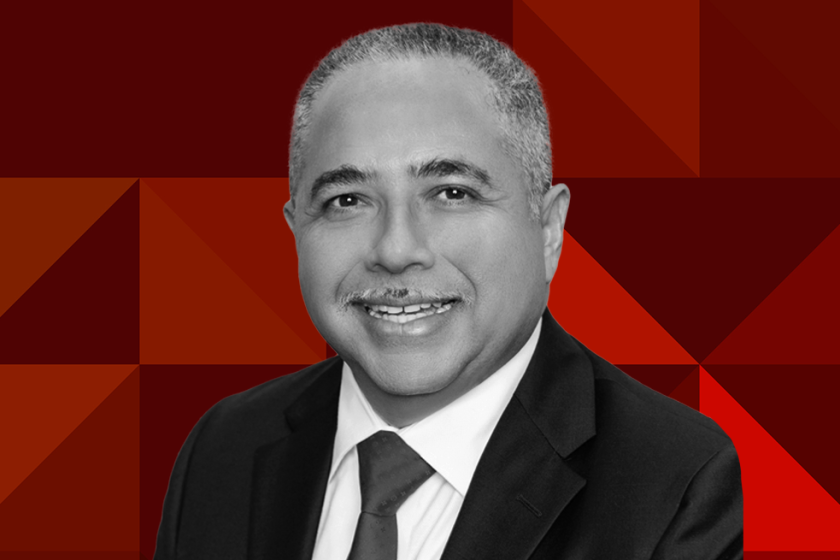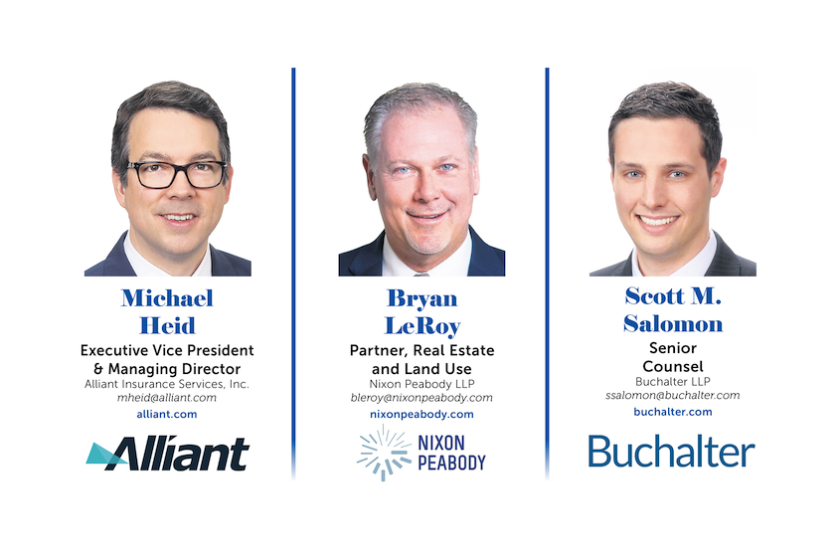Loryn Arkow, Richard K. Bridgford and Paul Nation Share Insights on Rebuilding Los Angeles
- Share via
The Rebuilding Los Angeles roundtable is produced by the LA Times Studios team in conjunction with Bridgford, Gleason & Artinian - Wildfire Attorneys; CBIZ; and Hogan Lovells.
Now in recovery mode after the devastating fires from earlier this year, Los Angeles County faces the immense challenge of rebuilding homes, businesses and communities. To help those affected to continue navigating this complex process, we turned to three experts of diverse specialties to discuss critical considerations, from insurance claims and contract negotiations to zoning regulations and government aid. Whether you’re a business owner, investor or homeowner, this roundtable will provide essential guidance on traversing a smooth path to recovery. Join us for an insightful discussion on the strategies that can help rebuild and strengthen all the affected areas.
Q: What are the most critical priorities for rebuilding Los Angeles after the wildfires?

Loryn Arkow, Partner, Hogan Lovells: Collaboration and collective action will be critical given the monumental task of rebuilding thousands of homes, businesses and community spaces. The logistics of deploying resources, including labor and materials, and accessing construction sites in a concentrated area with limited entry points will result in bottlenecks and frustration, absent deliberate coordination. The top priority for the rebuilding of Los Angeles after the wildfires is the development of a Master Plan led by an emergency authority to facilitate collective community action. To mitigate the logjam that will likely occur with thousands of uncoordinated construction sites and to facilitate rebuilding for homeowners without the capacity to rebuild themselves, the Master Plan should consider large-scale production of housing by master builders based on jurisdiction-approved building plan options that preserve the character of the impacted communities while at the same time design for safety and natural disaster resiliency.

Richard K. Bridgford, Founder and Lead Trial Attorney, Bridgford, Gleason & Artinian - Wildfire Attorneys: The most critical priority is holding the utility accountable for their fatal decision to place profit over public safety. Without holding the utility accountable, the nightmare will simply repeat itself. Accordingly, the community must come together behind their legal counsel in the lawsuit against SCE to ensure that homeowners, renters, businesses and those damaged in other ways are made whole. Unless this occurs, SCE will not change its corporate calculus. And if it does not change its corporate calculus, it will not adopt the safety measures necessary to prevent a re-occurrence. Such measures include undergrounding the wires, covered conductors, more robust vegetation management, and earlier implementation of public safety power shutoffs.
Q: What legal mechanisms can be used to prevent rebuilding in high-risk fire zones?

Paul Nation, Senior Managing Director, CBIZ: Based on the experience of our CBIZ Infrastructure Advisory Group, our recommendations include strengthening entitlements and permitting processes. This would create more stringent requirements for building in high-risk fire zones; incorporating insurance companies’ criteria into rules and regulations for rebuilding; and requiring developers to use only sustainable and energy-efficient materials prior to issuing permits.
Q: What role should the private sector play versus government agencies in rebuilding?
Arkow: While we entrust our elected officials and government agencies to lead and be the stewards of the rebuilding effort, the private sector, in partnership, can serve as an invaluable resource to contribute know-how and capacity to execute large-scale infrastructure and real estate development projects. Since January 7, business leaders across L.A. County have raised their hands to contribute innovative solutions, expertise and labor, and the real estate industry – builders, developers, architects, finance professionals, and attorneys, among others – is poised to support government in the creation of frameworks to expedite the rebuilding of communities. Government and the private sector, together with nonprofit organizations and other impacted individuals, contribute complementary skill sets to address the outsized challenges of the fire recovery.
Q: What are law firms and accounting firms doing to help businesses and individuals in need?
Bridgford: The regulatory agency and the utility are obviously failing in the task of providing electricity safely to California’s people. As such, the only backstop to preventing future wildfires are lawsuits that hold the utility accountable in court for the true extent of the damage they have inflicted and in a manner that will cause them to change their behavior. Unless this is done, we will simply see a repeat of the Eaton Fire. Because the law firms handling these cases advance all the costs and handle the cases on a contingency, which means they don’t get paid unless they succeed, they provide a critical public benefit in filling the gap caused by failed public policy.
Q: What are some steps that businesses and homeowners should be taking in terms of getting access to capital to rebuild?
Nation: For small businesses and homeowners, the recommended first step is to contact the Small Business Administration (SBA) as they have specific programs to assist directly with capital. SBA will assist homeowners with disaster relief. Contact your City Council Office as they have other resources and connections for capital to assist with rebuilding. Local Chambers of Commerce are another resource. These initial contacts should lead to the introduction of other organizations working to support businesses and homeowners in their recovery.
We need to end this system in California where it is heads the utility wins and tails the ratepayers and taxpayers lose. It is time to socialize the utility in California.
— Richard K. Bridgford
Q: What impact will the wildfires have on L.A.’s housing market and infrastructure? What is next for developers, construction and brokerage firms?
Arkow: Undoubtedly, wildfire destruction has exacerbated Los Angeles’ pre-existing housing shortage of approximately 500,000 units. Government and developers must double down on housing construction in all parts of Los Angeles County, which will help fire victims, directly and indirectly, as well as others impacted by the heightened housing shortage. Measures to cut red tape, streamline the California Environmental Quality Act (CEQA) and suspend Measure ULA (United to House LA) which has suppressed investment, will help to ease the housing crisis. The acute supply shortage of qualified contractors and construction workers needs to be addressed by the public and private sector for the sake of the wildfire rebuilding efforts and the general housing shortage.
Q: How can liability issues be addressed for utilities and developers in wildfire-prone areas?
Bridgford: None of the efficiencies achieved in a free enterprise system, when entities compete, can be achieved with the utility. The competition rationale for allowing the utility to make a profit and distribute dividends that exists for a private enterprise does not exist with the California utilities. As such, the utility’s sole aim should be the safe and efficient provision of electricity – not dividends or return on their stock. SCE made nearly $1.7 billion in 2024 as paid dividends in excess of $25 a share. All of that money should’ve gone into wildfire remediation. The AB 1054 fund, which was created to avoid bankruptcy, such as the PG&E Bankruptcy in the 2017 and 2018 Fires, was funded by the ratepayers and taxpayers. Ultimately, it would be more efficient to socialize the utility and make it the property of the people. Every cent presently allocated to profit should go into public safety: underground the wires, covered conductors, robust vegetation management, and better public safety power shutoff.
Q: How can public-private partnerships be leveraged to fund large-scale reconstruction efforts?
Nation: The solutions for large-scale construction will require funding from private equity, family offices and funds. An example is one of CBIZ’s public-private partnership projects (P3) to raise capital for a state-of-the-art, technology-based facility, which will be a solution for Los Angeles’ disaster response in the future. P3s can be expanded to address emergency and maintenance funds that support each project.
Q: How can we streamline permitting processes to accelerate rebuilding while maintaining safety?
Arkow: Executive Orders issued by Mayor Bass and Governor Newsom have significantly enhanced the ability of fire victims to rebuild their homes and businesses. Among other things, these directives suspend the requirements of CEQA and the California Coastal Act for properties reconstructed in substantially the same footprint and, in the City of Los Angeles, establish expedited timelines for permit review, inspections, process clearances and utility releases. The City of Los Angeles is considering adopting plan self-certification, as exists in San Diego and New York, allowing licensed architects to certify plans, significantly streamlining the permitting process. Supplementing city and county professionals with agency personnel from neighboring jurisdictions or, as implemented in Santa Rosa after its fires, private contractors to handle plan review, inspections and public interface could expedite rebuilding efforts. These innovations present an opportunity for jurisdictions to consider the broader and permanent applicability of fire-related solutions to address the ongoing widespread housing crisis.
Q: How can we ensure that rebuilding efforts do not lead to displacement and gentrification?
Nation: Large corporations are primarily financing rebuilding efforts. Therefore, it is of the utmost importance for community organizations to have a voice in rebuilding their neighborhoods. There should be transparency in the plans submitted to City Planning and L.A. Building and Safety, and each Council Office should hold meetings to take community input into consideration. There should be financial guarantees so that no single homeowner cannot afford to return to their home.
The spike in demand following such massive loss will inevitably result in higher labor and materials costs, necessitating a nuanced approach to distinguish the resulting higher costs from price gouging in order to avoid suppressing supply.
— Loryn Arkow
Q: How can we improve emergency preparedness and community awareness for future disasters?
Bridgford: The best emergency preparedness plan is one that prevents the wildfire from occurring. First, underground the wires. Second, where this is not feasible, adopt covered conductors. Third, actually adopt robust vegetation management and force its implementation with significant civil penalties. Fourth, lower the threshold for the implementation of public safety power shutoffs.
Nation: Technology will be key for emergency preparedness and community awareness. Large-scale projects such as centralized emergency response are critical. Other examples include increasing the number of helicopters and ambulances available to firefighters. In addition to the City’s present app, Facetime ability with our EMTs would enhance lifesaving capabilities. There must be an ongoing educational component for members of the community so they can keep up with these advances in technology.
Q: What factors contribute to a faster or slower recovery?
Arkow: Appropriate economic incentives can facilitate a faster recovery. For example, after the 1994 Northridge earthquake, the 10 Freeway was rebuilt in three months (74 days ahead of schedule) given monetary incentives for early completion. On the other hand, heavily regulating the post-fire rebuild, including disallowing reasonable monetary incentives for contractors, may suppress supply. The spike in demand following such massive loss will inevitably result in higher labor and materials costs, necessitating a nuanced approach to distinguish the resulting higher costs from price gouging in order to avoid suppressing supply. Policymakers must strike a delicate balance to achieve the public good.
There should be transparency in the plans submitted to City Planning and L.A. Building and Safety, and each Council Office should hold meetings to take community input into consideration.
— Paul Nation
Q: What are the unforeseen ripple effects that a major disaster can cause?
Bridgford: I foresee some positive effects. California, if it were a nation, would be the fifth largest nation in the world, behind only the United States, China, Japan, and Germany and ahead of Great Britain and France. California is an extremely wealthy state full of brilliant and innovative people. But unfortunately, its system for the provision of power and its utility system is antiquated. The private monopoly utility system is a hangover of the 19th century. It was devised at a time when almost all sources of capital were private. The federal government’s budget at the time electricity was invented by Edison and Tesla was in the small millions. There was no federal income tax. There was no state income tax. And government played a much smaller role in the lives of its people. There was no need for more than one electric grid in a given service area. Therefore, and by definition, the utility does not compete, nor does the public enjoy any of the efficiencies typically associated with competition in private enterprise. Instead, what we have is a monopoly that is allowed to profit off the people and redistribute that wealth from ratepayers and taxpayers to Wall Street. Like the fire department, the police department and the military, we only need one and they should be owned by the people. The only objective of the utility should be the safe and efficient provision of electricity. Profit and dividends should play no role. Instead, all the revenue generated from ratepayers should be allocated to the safe and reliable provision of electricity. For those who believe that government is inefficient vis-à-vis the private sector, let me just say that the government, which is to say the people, is already involved in the utility through the regulation of the CPUC, and because it is the ratepayers and the taxpayers, who are really the same people since everyone needs electricity, who are back-stopping the for-profit monopoly utilities in the State of California through the increased rates and taxes they paid to create AB 1054. As such, and especially when the utility is failing in its effort to provide electricity without causing wildfires, not a cent of that $1.7 billion in profit should be going to Wall Street. It should all be coming back to California for wildfire remediation. In a good year, when they have not caused a wildfire, it is the investors of the utility that profit with increased dividends. But in a bad year, when they have caused expensive wildfires, it is the ratepayers and taxpayers who back-stop their negligence. We need to end this system in California where it is heads the utility wins and tails the ratepayers and taxpayers lose. It is time to socialize the utility in California.
Q: How does the recovery process influence a post-disaster economy?
Nation: It is imperative that the recovery process be solution-oriented and focused on moving forward. There should be short-term solutions such as the rebuilding of devastated neighborhoods and bringing people back to their homes. At the same time, long-term solutions must be employed. Those solutions would include new technology, updated equipment for firefighters, further air support, and centralized communication facilities for emergencies. CBIZ’s public-private partnership project (P3) is an example of one of the ways private companies and the government can join forces to raise funds for short- and long-term solutions.





